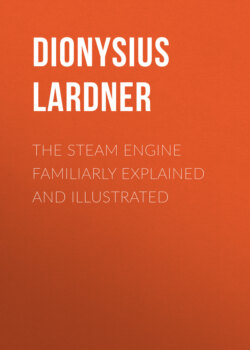Читать книгу The Steam Engine Familiarly Explained and Illustrated - Dionysius Lardner - Страница 10
На сайте Литреса книга снята с продажи.
EDWARD SOMERSET, MARQUIS OF WORCESTER, 1663.
ОглавлениеTable of Contents
(27.) Of all the individuals to whom the invention of the steam engine has been ascribed the most celebrated was the Marquis of Worcester, the author of a work entitled "The Scantling of One Hundred Inventions," but which is more commonly known by the title "A Century of Inventions." It is to him that by far the greater number of writers and inquirers on this subject ascribe the merit of the discovery of the invention. This contrivance is described in the following terms in the sixty-eighth invention in the work above named:—
"I have invented an admirable and forcible way to drive up water by fire; not by drawing or sucking it upwards, for that must be, as the philosopher terms it, infra spæram activitatis, which is but at such a distance. But this way hath no bounder if the vessels be strong enough. For I have taken a piece of whole cannon whereof the end was burst, and filled it three quarters full of water, stopping and screwing up the broken end, as also the touch-hole and making a constant fire under it; within twenty-four hours, it burst and made a great crack. So that, having a way to make my vessels so that they are strengthened by the force within them, and the one to fill after the other, I have seen the water run like a constant fountain stream forty feet high. One vessel of water rarefied by fire driveth up forty of cold water, and a man that tends the work has but to turn two cocks; that one vessel of water being consumed, another begins to force and refill with cold water, and so successively; the fire being tended and kept constant, which the self-same person may likewise abundantly perform in the interim between the necessity of turning the said cocks."
These experiments must have been made before the year 1663, in which the "Century of Inventions" was published. The description of the machine here given, like other descriptions in the same work, was only intended to express the effects produced, and the physical principle on which their production depends. It is, however, sufficiently explicit to enable any one conversant with the subsequent contrivance of Savery, to perceive that Lord Worcester must have contrived a machine containing all that part of Savery's engine in which the direct force of steam is employed. As in the above description, the separate boiler or generator of steam is distinctly mentioned; that the steam from this is conducted into another vessel containing the cold water to be raised; that this water is raised by the pressure of steam acting upon its surface; that when one vessel of water has thus been discharged, the steam acts upon the water contained in another vessel, while the first is being replenished; and that a continued upward current of water is maintained by causing the steam to act alternately upon two vessels, employing the interval to fill one while the water is discharged from the other.
On comparing this with the contrivance previously suggested by De Caus, it will be observed, that even if De Caus knew the physical agent by which the water was driven upwards in the apparatus contrived by him, still it was only a means of causing a vessel of boiling water to empty itself; and before a repetition of the process could be obtained, the vessel should be refilled, and again boiled. In the contrivance of Lord Worcester, on the other hand, the agency of the steam was employed in the same manner as it is in the steam engines of the present day, being generated in one vessel, and used for mechanical purposes in another. Nor must this distinction be regarded as trifling and insignificant, because on it depends the whole practicability of using steam as a mechanical agent. Had its action been confined to the vessel in which it was produced, it never could have been employed for any useful purpose.
